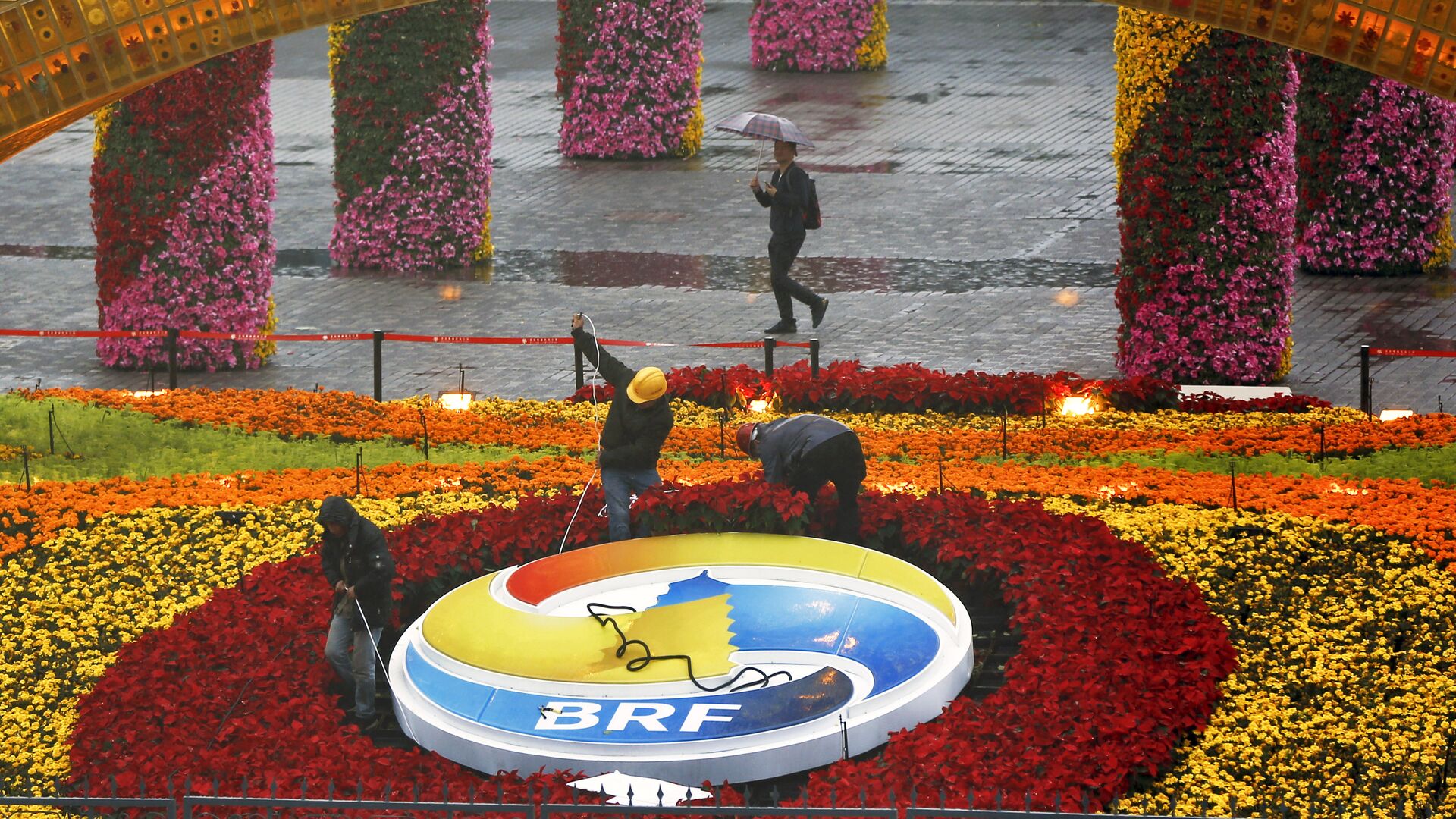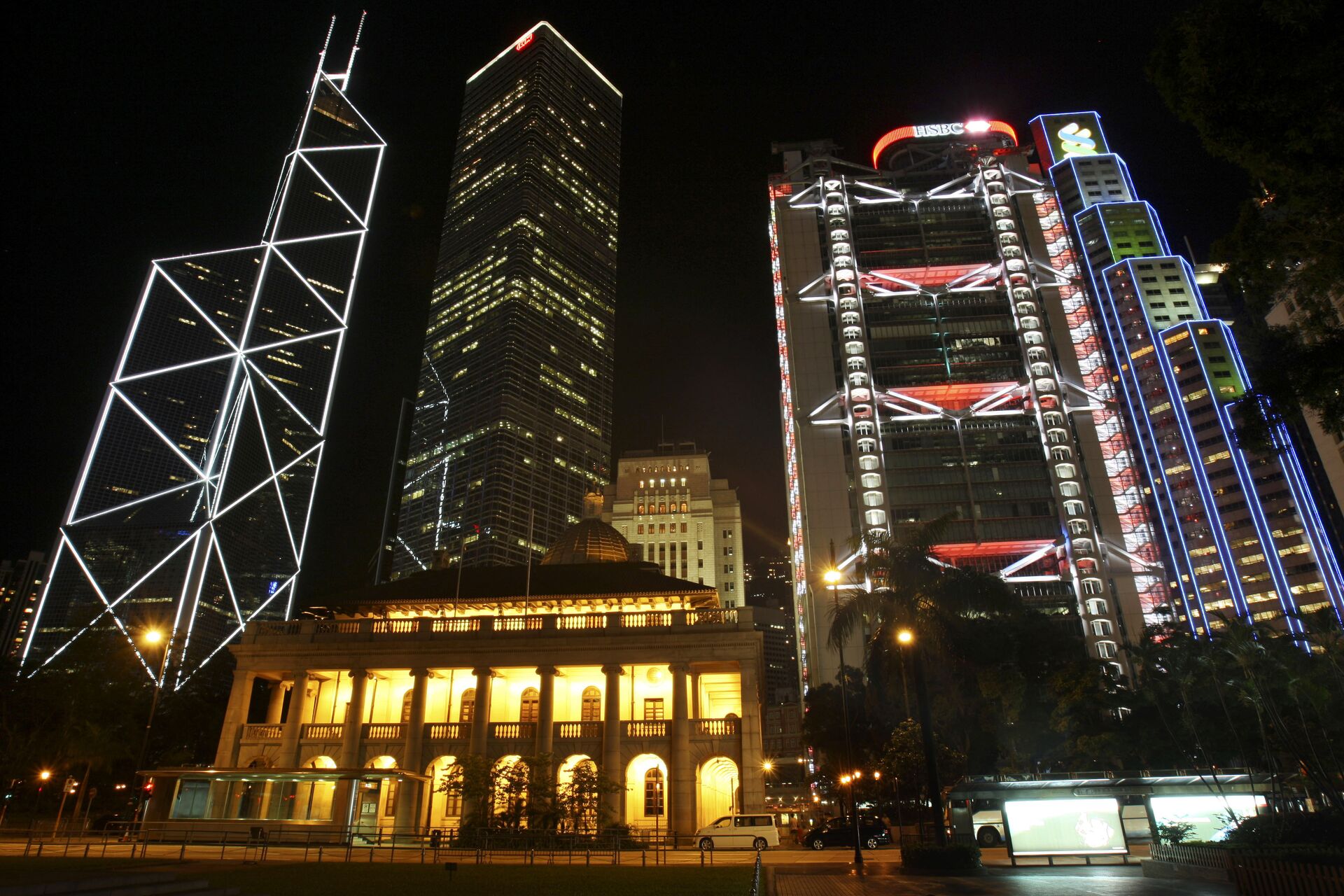US State Dept-Backed Study Claims BRI Partners Have $385 Billion in Unreported Debt to Chinese Banks
20:44 GMT 30.09.2021 (Updated: 11:59 GMT 26.10.2022)

© AP Photo / Andy Wong
Subscribe
A new study by a research group backed by the US State Department claims to have found hundreds of billions in so-called “hidden” debt to Chinese banks in low and middle-income countries associated with Belt and Road Initiative (BRI) infrastructure projects. The researchers say it sheds light on how the US can compete with China.
"Many foreign leaders who were initially eager to jump on the BRI bandwagon are now suspending or cancelling Chinese infrastructure projects because of debt sustainability concerns,” Brad Parks, executive director of AidData at the College of William and Mary and one of the study’s authors, told AFP on Wednesday.
"What we're seeing right now with the Belt and Road Initiative is buyers' remorse," he added.
Titled “Banking on the Belt and Road,” the report examined 13,427 infrastructure projects across 165 countries over an 18-year period beginning in 2000. It claims to have found that China’s overseas development finance programs are actually much larger than western financial institutions had previously believed, and says their obscurity is a warning to nations considering deals with Beijing.
According to the report, before the BRI was launched in 2013, the majority of China’s overseas lending was performed by sovereign borrowers, or central government financial institutions; this shifted under BRI and now, nearly 70% of China’s overseas lending is being handled by state-owned companies, state-owned banks, special purpose vehicles, joint ventures, and private sector institutions.
“These debts are systematically underreported to the World Bank’s Debtor Reporting System (DRS) because, in many cases, central government institutions in LMICs are not the primary borrowers responsible for repayment,” the report’s executive summary states. “We estimate that the average government is underreporting its actual and potential repayment obligations to China by an amount that is equivalent to 5.8% of its GDP. Collectively, these underreported debts are worth approximately $385 billion.”
The report implies its numbers reflect poorly on China, but it’s not clear why that would be the case. As a percentage of its gross domestic product (GDP), 5.8% is not especially large when it comes to debts. Moreover, Western financial institutions often extend even larger loans to poor nations.
For example, in June, the International Monetary Fund (IMF) gave Sudan a $2.5 billion loan; with just a $30.5 billion GDP, that loan by itself is 8.1% of Sudan’s GDP. Chad, with a GDP of $11.31 billion, owes $1 billion to Anglo-Swiss conglomerate Glencore alone - 8.8% of its GDP - on top of numerous IMF loans.

A general view of central downtown, including from top left, Bank of China, The Cheung Kong Center, HSBC's headquarters and the Standard Chartered Bank as well as the Legislation Council, bottom, in Hong Kong
© AP Photo / Kin Cheung
Loans from the IMF aren’t simply money that must be repaid with interest, though: they come with stiff requirements for financial restructuring according to what the bank considers to support sustainable economic growth - that is, massive privatization schemes and pro-business reforms that destroy nation’s financial sovereignty and leave them forever dependent upon the IMF and Western international conglomerates. Chinese lenders make no such demands.
A closer look at AidData’s backers reveals why it has taken such a dim view on the situation.
According to its website, financial donors include the World Bank; the Hewlett Foundation, established by Hewlett-Packard cofounder William Redington Hewlett; the Bill & Melinda Gates Foundation, established by the Microsoft founder and his wife; and the Ford Foundation, established by Ford Motor Company founder and Nazi sympathizer Henry Ford and his son Edsel.
Other financial backers include the China Power Project at the Center for Strategic and International Studies (CSIS), a hawkish Washington think tank; the US Agency for International Development (USAID), a US government agency that operates under the purview of the US Department of State and the White House National Security Council; and the Millennium Challenge Corporation, a subsidiary of USAID and the State Department.
In other words, a host of groups whose work is dedicated to preserving American domination of the globe and smearing China at every opportunity. It’s no surprise that the report repeatedly promotes the Build Back Better World (B3W) program announced by the Group of Seven in June as a way to undercut China’s BRI.
"B3W is going to increase choice in the infrastructure financing market, which could lead to some high-profile BRI defections," Parks told Reuters.


